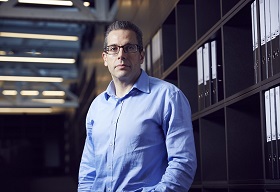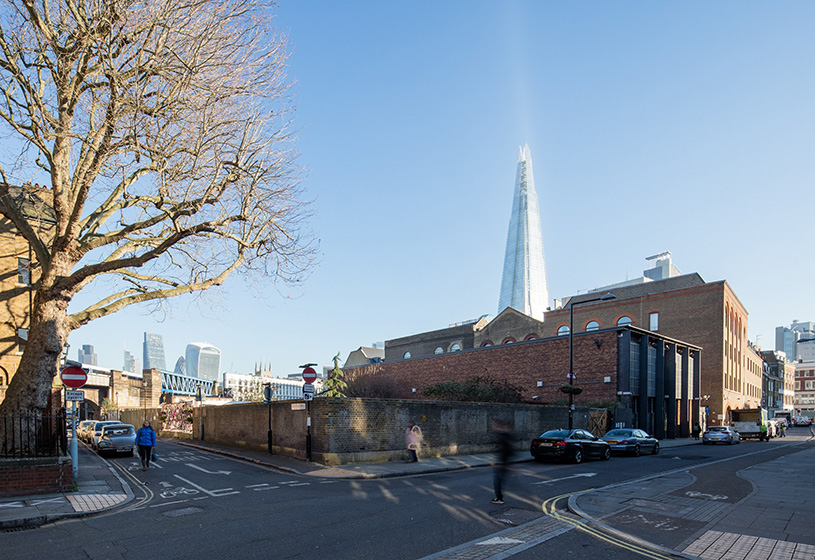Real estate in the augmented age
Matthew Weiner, Chief Executive of U+I, has written about the real estate sector in the age of augmented reality.
As I sat in my synagogue celebrating Jewish New Year recently, my rabbi was talking of robotics. In particular, he was telling us about the Bless U2 robot: not a mechanised fan of an Irish rock group, but an android that can bless you in five languages, has a touch screen to answer your theological questions and raises its arm at inspirational moments.
I don’t think my rabbi felt his job was under threat, but it underlined to me just how much robotics and artificial intelligence (AI) is extending into every aspect of our lives.
In real estate, most of the AI technology has been used in the fields of property management and building automation, largely driven by a desire to control and reduce costs. That’s fine and important, but not particularly inspiring. It also misses a bigger point.
At U+I, we do not just think in terms of buildings, but of places, of communities. Communities are all about connections. Connections between people, between places, between the past and the present.
It seems to me that AI, machine learning and robotics may have an important role in helping us understand these connections before and after we develop the places that we want to turn into communities. If we can analyse what local people are looking for on their search engines, we might understand their wants and needs better in designing our projects. All manner of data from a myriad of sources can help create a better picture of the way people interact with each other and with a place.
We are already getting better at understanding the way people use buildings, and see some disruptive trends emerging.
First, connectivity is key. Be it shopping centre apps, automated warehouses or smart homes, digital connectivity is now just as important as physical connectivity.
Second, the demand for a personalised service is growing. Shoppers are being sent targeted offers on their mobiles, while office occupiers are putting a greater premium on the look and feel of their workplaces in the war for talent.
Finally, convenience has become a top priority. One-hour delivery services and click and collect have transformed the retail and logistics sectors with time emerging as an increasingly precious commodity for today’s time poor consumers.
As such, buildings need to be more adaptable as working styles and social habits change and new technologies become available.
But while the technological future is exciting and bright, we also need to exercise some caution. Ours is not, after all, a binary business. It Is not always a 1 or 0, a question of right or wrong, a simple easy answer. Good development can and should be guided by data but it is inspired by values. In our case, those of intelligence, imagination and audacity.
Take Landmark Court in Southwark, a project U+I is working on in partnership with Transport for London who own the land. To look at it is just an abandoned car park next to a railway line with a derelict bit of green space round the corner. But that piece of green space is in fact the Cross Bones Graveyard – an historic cemetery for prostitutes and paupers.
This park is much loved by the local community and will be an important factor as we bring the scheme forward. How we preserve this and work it into a wider plan is not clear. We will need to have a vision and as Jonathan Swift said: 'Vision is the art of seeing things invisible'.
Humans can do that; algorithms can’t. Place is always going to be more than just a lump of land.
So while AI, augmented reality and other advances will teach us much and guide us to a greater understanding of how to achieve a vision, Bless U2 is going to have to leave it to my rabbi to guide us humans and our weird, irrational and wonderful visions of how we can all live in a better world in a better way.
This article was originally published on 1 Oct 2017 by U+I. It was written by Matthew Weiner.
--U and I
[edit] Related articles on Designing Buildings Wiki
- Articles by U and I.
- Advanced construction technology.
- Artificial intelligence and civil engineering.
- Augmented reality in construction.
- ConTech.
- How technology is changing the real estate industry.
- How we should regulate the real estate industry
- Industry Disruption: 10 ways real estate is changing.
- Landmark Court, Southwark.
- Mixed reality.
- Projections.
- Real estate.
- Real estate - going from villain to hero.
- The impact of digital on civil engineering.
Featured articles and news
Government consultations for the summer of 2025
A year of Labour, past and present consultations on the environment, the built environment, training and tax.
CMA competitiveness probe of major housing developers
100 million affordable housing contributions committed with further consultation published.
Homes England supports Greencore Homes
42 new build affordable sustainable homes in Oxfordshire.
Zero carbon social housing: unlocking brownfield potential
Seven ZEDpod strategies for brownfield housing success.
CIOB report; a blueprint for SDGs and the built environment
Pairing the Sustainable Development Goals with projects.
Types, tests, standards and fires relating to external cladding
Brief descriptions with an extensive list of fires for review.
Latest Build UK Building Safety Regime explainer published
Key elements in one short, now updated document.
UKGBC launch the UK Climate Resilience Roadmap
First guidance of its kind on direct climate impacts for the built environment and how it can adapt.
CLC Health, Safety and Wellbeing Strategy 2025
Launched by the Minister for Industry to look at fatalities on site, improving mental health and other issues.
One of the most impressive Victorian architects. Book review.
Common Assessment Standard now with building safety
New CAS update now includes mandatory building safety questions.
RTPI leader to become new CIOB Chief Executive Officer
Dr Victoria Hills MRTPI, FICE to take over after Caroline Gumble’s departure.
Social and affordable housing, a long term plan for delivery
The “Delivering a Decade of Renewal for Social and Affordable Housing” strategy sets out future path.
A change to adoptive architecture
Effects of global weather warming on architectural detailing, material choice and human interaction.
The proposed publicly owned and backed subsidiary of Homes England, to facilitate new homes.
How big is the problem and what can we do to mitigate the effects?
Overheating guidance and tools for building designers
A number of cool guides to help with the heat.
The UK's Modern Industrial Strategy: A 10 year plan
Previous consultation criticism, current key elements and general support with some persisting reservations.
Building Safety Regulator reforms
New roles, new staff and a new fast track service pave the way for a single construction regulator.



























